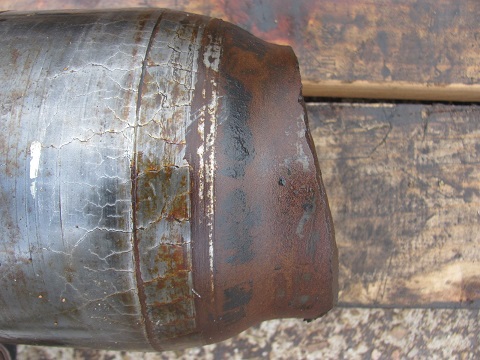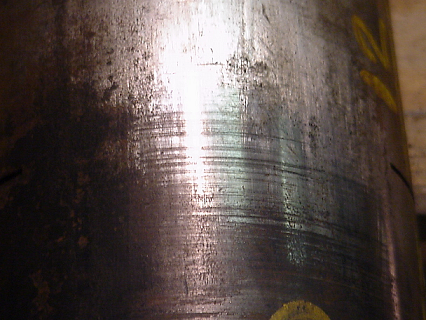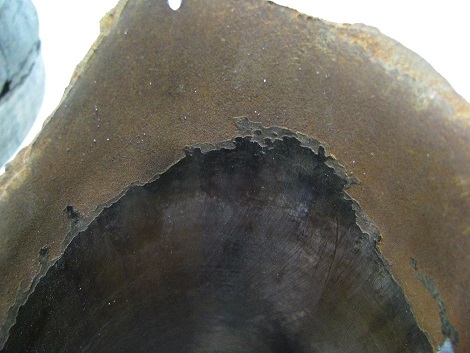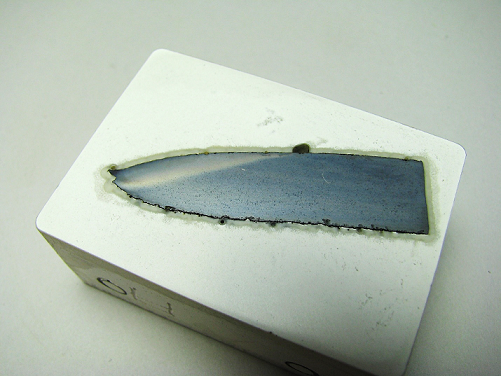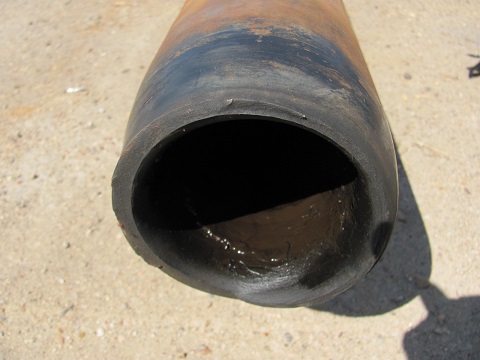I Could Be Wrong Now, But I Don’t Think So
Maybe I’m just insecure, but I do love when I can “magically” know what’s happening on a rig thousands of miles away from my comfy chair. I get nothing but a picture from the rig, thusly:
And I respond with: “You were packed off, huh?”
“You’re a witch! How did you know that!?!"
Come with me behind the curtain, grasshopper, and you, too, can impress your friends and terrify your rabbits.
Typical rotary drilling includes fluid flow: we pump our mud down the middle of the pipe, it sloshes down to the bit, it flushes the rock bits away from the cutters, and it meanders back up the annulus, carrying those cuttings out of the way. (Yes, I know there are alternatives—I said “typical,” didn’t I?)
Now imagine you didn’t get any fluid flow. Your rock bits wouldn’t go anywhere, so they’ll gather around your pipe as you’re trying to drill ahead. That will create a lot of friction, which will heat up your pipe. Really, really hot. (How hot is it?) Hot enough to cause it to fail, that’s how hot.
How do I know this? Looky here:
That’s polished, shiny metal on the outside of the pipe, caused by friction. Not hot enough? Try this:
That’s burnt plastic coating on the inside of the pipe. So it got hot enough to burn that plastic not just on the outside where the friction was, but all the way through the wall of the pipe to heat up the ID. Still not convinced? How about:
To orient you, that’s a polished strip out of the broken drill pipe, with the fracture to the left. You see that metal rainbow right near the fracture? That means the steel got hot enough to change its very structure—at least 1,600°F.
This is where I lose people, honestly.
You’re telling me my pipe made it over 1,600°F? The hottest this hole ever got by any other measurement is around 300°F; I pulled tools out of the hole with elastomers in them that were fine; how would I even be able to heat up a whole well that hot?! Nope, I’m calling BS.
I didn’t say your whole chonkin’ well made it to 1,600°F—that would, in fact, be crazy. I’m saying that one spot on your drill pipe made it to 1,600°F, because it was that one spot where all the frictional energy was focused. Kind of like how you can weld by melting metal, but only in one spot—the whole fab shop doesn’t have to be a crucible just to stick two I-beams together, does it?
What’s really fun (for me) is what ensues when you do manage to heat a joint of drill pipe until it’s cherry red, because then I get to take fun pictures:
That one’s a classic, with the tube all mooshed around like a two-year-old’s Play-Doh snake. Interestingly, sometimes you get a brittle fracture:
That’s just plain blame weird—there’s obvious signs of necking and ductility near that fracture, but the fracture surface itself is flat, grainy, and entirely typical of a brittle (that is, non-ductile) fracture.
What happens is that the pipe has been heated up to cherry red, which causes a microstructural boondoggle as we saw before, but the fluid flow is suddenly restored. So now you immerse that piping hot steel in much-cooler drilling fluid, which quenches the partial austenite into a microstructural phase that material scientists usually refer to as “total crap.” It’s harder and more brittle than it should be, it’s likely being overstressed just through the contraction of the quenching process, and it falls apart like a food-truck taco.
Also interesting: there can be a delay. As in, you pack off your pipe, you restore circulation, and then at some point later in the well the deeply-disturbed material properties lead to the actual fracture.
Now, the point of this failure analysis stuff is really to work out how to not have that failure again. True story: when I started doing these analyses, I would recommend to my customers in my final report that, if circulation was blocked or limited, they should limit their rotation to minimize the frictional heating that went into the pipe.
Yeah, I know that was a dumb thing to say.
Somebody called me out, thankfully: You know that, if we’re packed off and lose circulation, and we stop rotating—that just means we’re stuck, right? Hm, indeed … maybe you shouldn’t do that …
What could you do? Honestly, not much. You’re already in a bad situation; you do whatever you can to try to land the plane.
This is very much an “ounce of prevention = pound of cure” type of situation. Your best bet is to keep the mud flowing, thus avoiding this particular dark alleyway all together. That, of course, means keeping your hole clean, even as your rig is doing its absolute darndest to beat whatever ROP record that’s out there. If you’re drilling faster, it means you’re making cuttings faster, which means you’ve got to be evacuating those little jerks faster. Ignore that at your drill pipe’s peril.
So … clean your hole, yeah? And track it using your torque & drag program to make sure you’re doing a decent job.
I’ll leave you with some wisdom from the past. I’ve got a little booklet on my shelf from a Stuck Pipe Prevention Course that Tom Hill (you know, from “T H Hill Associates”?) put together. On multiple occasions he mentions what he calls “Roddy’s Rule” (named for a Scottish drilling engineer in his past):
First stabilize the hole, then clean the hole.
A good idea, and a good mantra for when things start to get sideways in your well. You will certainly be unsuccessful if you try to clean out your hole while it’s still falling apart on you, but often we panic and jack up the pump rates or send down sweeps or something, generally trying to not get stuck, before we realize that’s actually going to make our hole stability problems worse. Remember Roddy’s Rule.
Another bit of wisdom comes when the booklet discusses scenarios when Roddy just can’t be placated. You know the times: the hole washes out just looking at it, you’re on total losses and there’s no way not to be (and your mud engineer is driving a brand new truck), you’re in that one sub-salt formation, etc, etc. In those cases, you have basically two options:
- Get through it somehow and get it cased.
- Examine alternative careers in banking, real estate, or food services.
Yeah. Been there.
